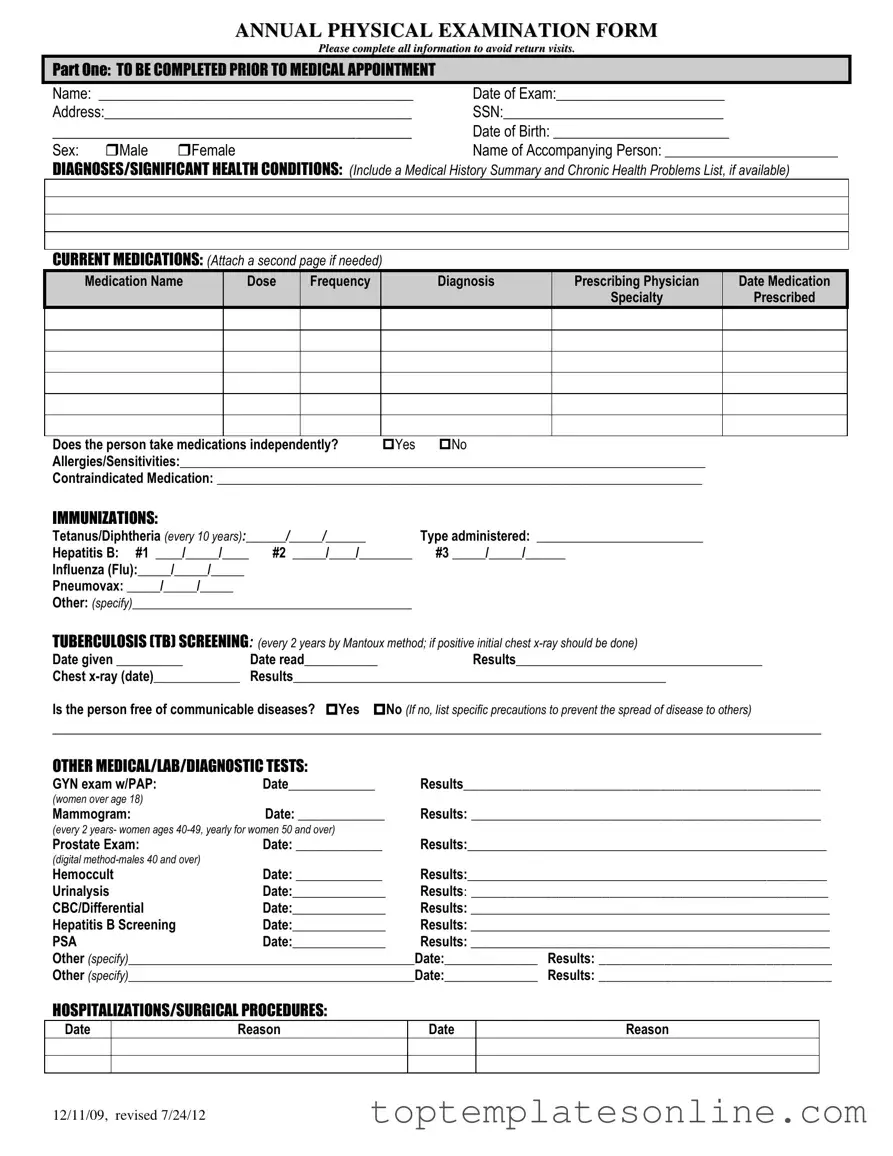The Annual Physical Examination form is an essential tool designed to streamline the process of gathering vital health information before a medical appointment. It begins with a section for personal details, including the patient's name, date of birth, and contact information, ensuring that healthcare providers can easily identify and communicate with their patients. A comprehensive medical history is also crucial, as it invites patients to disclose any significant health conditions and current medications, including dosages and prescribing physicians. This section not only helps to avoid potential medication conflicts but also provides a clearer picture of the patient's overall health. Immunization records are meticulously documented, covering essential vaccinations like Tetanus, Hepatitis B, and Influenza, along with details of tuberculosis screening. The form further delves into any past hospitalizations or surgical procedures, offering insights into the patient's medical background. In the general physical examination section, healthcare professionals assess various bodily systems, recording blood pressure, pulse, and other vital signs, while also evaluating normal findings and any concerns that may arise. Finally, it allows for additional comments and recommendations tailored to the individual's health maintenance, ensuring a holistic approach to patient care. By completing this form thoroughly, patients can help facilitate a more productive and informative appointment, ultimately enhancing their healthcare experience.
